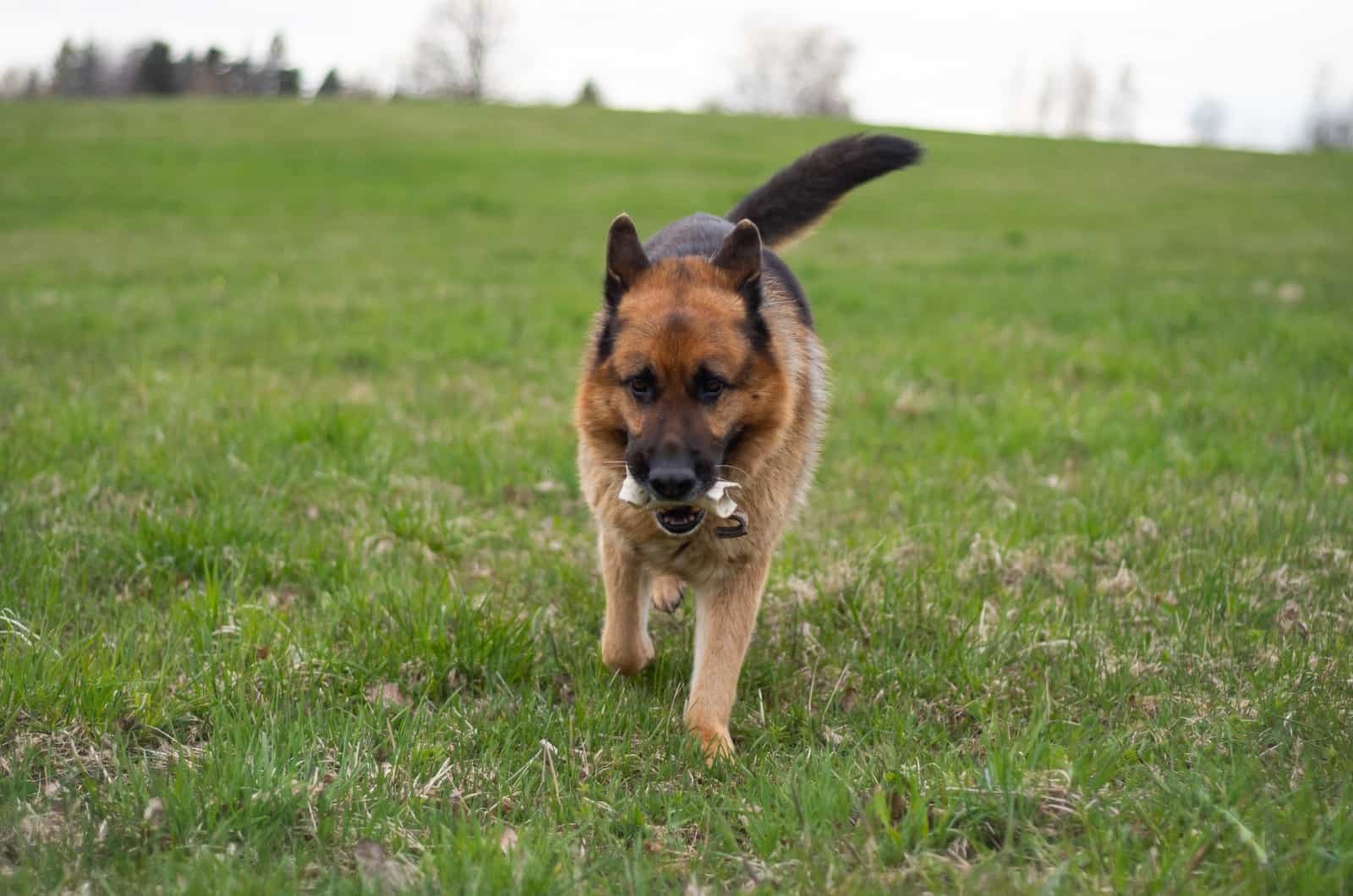Is your GSD indicating its happiness by wagging its tail? Well, I’m sorry to break it down to you, but that isn’t always the case!
There are many ways a German Shepherd dog may wag its tail, and all of them might have some different meanings behind it. I suppose that you know that one of the finest ways to communicate among dogs is to wag their tail (together with vocal communication).
A simple tail wag can have many different meanings behind it that can be interpreted only when we take the full body language into account.
What Can It Mean When A GSD Is Wagging Its Tail?
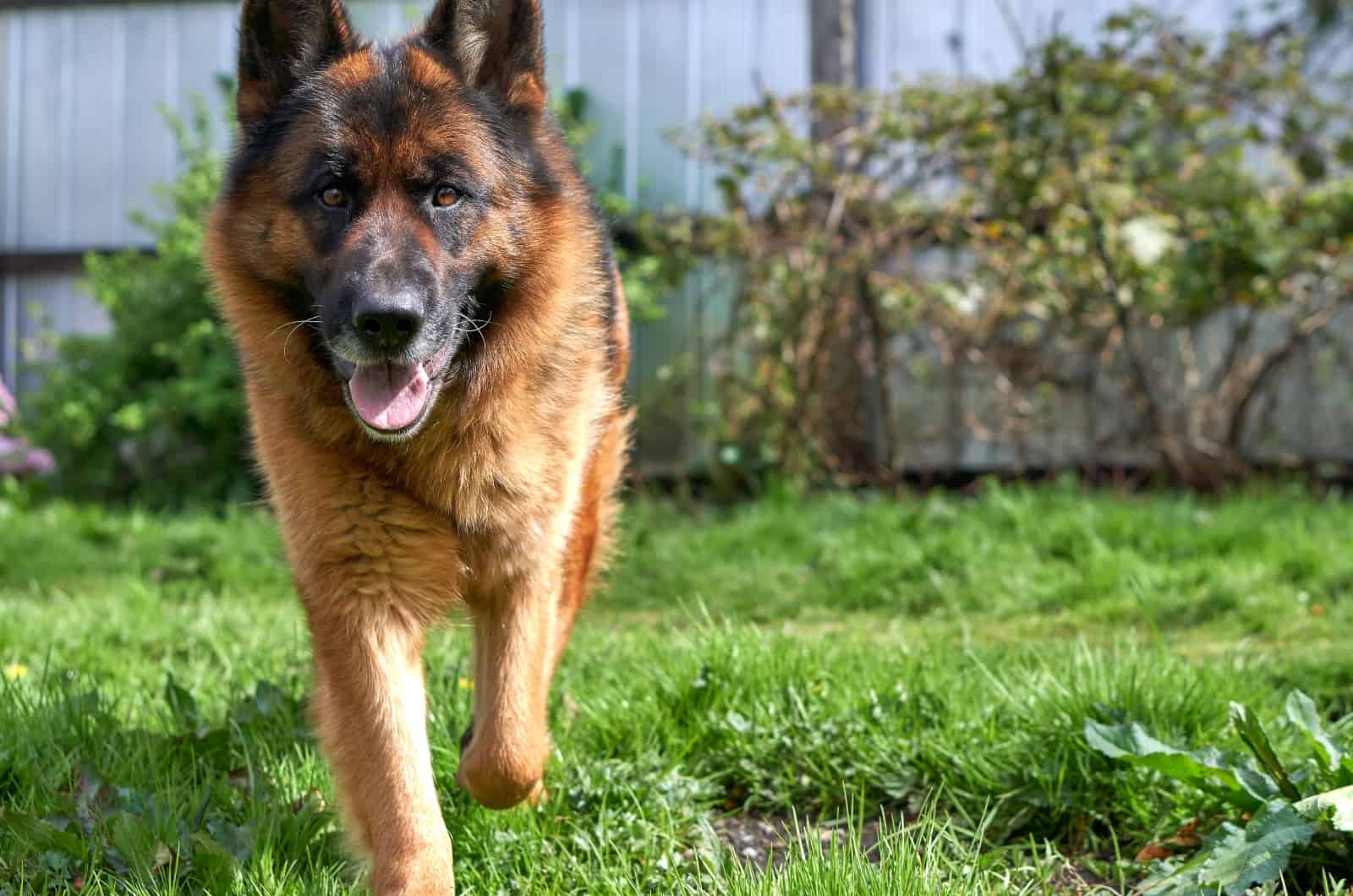
I have acknowledged that when a dog wags its tail, it could mean many different things. Those things might be a sign of both positive and negative behaviors.
German Shepherds are a kind of dog breed that is not known for anxious, destructive, or any kind of negative behavior. Therefore, it is more likely that your German Shepherd is wagging its tail for other reasons.
For example, my neighbor has a German Shepherd dog named Lilly, that goes in helicopter mode with her fluffy tail every time we meet. Not once did I see her display any kind of negative behavior.
As tricky as recognizing the intention behind a tail wag is, I have decided upon making this easier for you. Therefore, let’s go through GSD tail wagging explanations!
1. They Are Feeling Submissive
Whenever a German Shepherd is feeling submissive towards you or another dog, their tail will shift from a neutral pose to a lower one, and will start wagging.
Whenever your pooch is feeling submissive, tail wagging is not the only way of showing that emotion through their body language.
You might also be noticing that they are licking their nose, yawning, and lowering their ears and body in general because this kind of behavior does not only include the tail, but the whole body posture.
My colleague has had the opportunity to work with a German Shepherd dog that has a history of uncontrollable barking. However, she was extremely submissive, always yawning, and lowering her tail and ears to show that she did not mean any harm to him.
What happened was that the root of her constant barking was separation anxiety since she was left to be on her own for at least 8 to 10 hours a day.
Other than that, she was a sweetheart, and we managed to solve the problem quickly.
Often, when submissive, German Shepherd dogs will also lay on their back, revealing to you the parts where they are the most vulnerable: their tummy. This means that they trust you so much that they trust you with their whole body.
2. They Are Being Protective
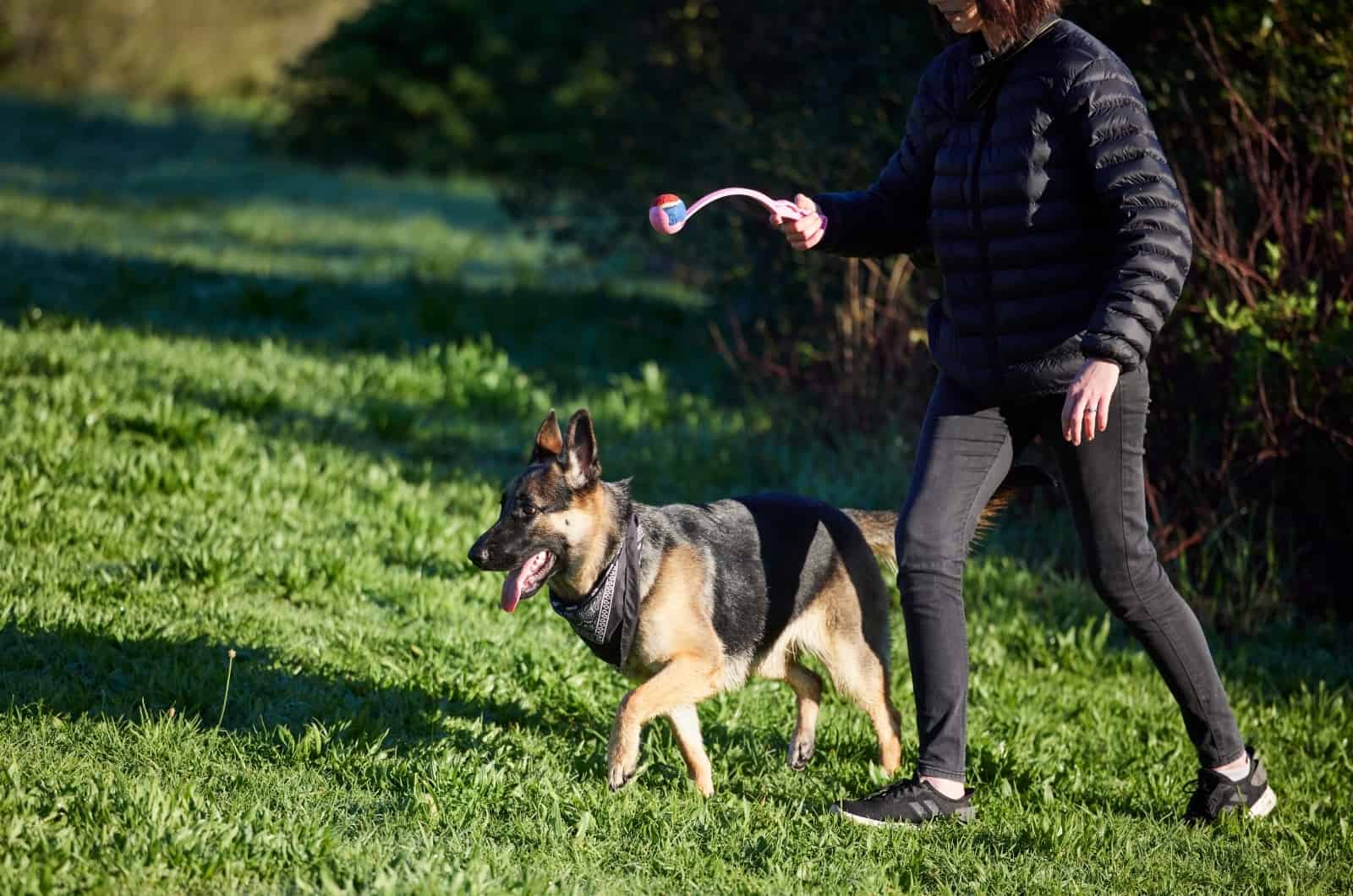
If you see your German Shepherd running close to the gate or the fence of your property, or if you live in an apartment, and he is at the door, combining barking, growling, and tail wagging: it is an accurate indication that your GSD is being protective.
German Shepherds are known for their guarding and herding instincts; therefore, this behavior is not surprising at all. They are one of the best guard dogs out there.
This behavior can also be recognized by noticing the posture of the tail since it will be standing medium or high, and never standing low or between the legs.
3. They Are Excited
This is when their tail goes into the helicopter mode that I mentioned before. Whenever they are excited for something, may it be seeing you, may it be food, or anything else that makes them happy, the GSD will be wagging its tail like crazy.
Since wagging their tail and being vocal are two of the most prominent communication styles of canines, they will probably incorporate both when they are excited.
Crying and barking may also be included with their excited tail wags, lowered ears, and the thing that I call ‘the loud sniffs’ and occasional sneezing.
In this video, you will be able to see the positive way of a German Shepherd showing affection to its owner, and you will also be able to hear the occasional ‘loud sniffs’ and recognize them.
4. They Are Feeling Playful
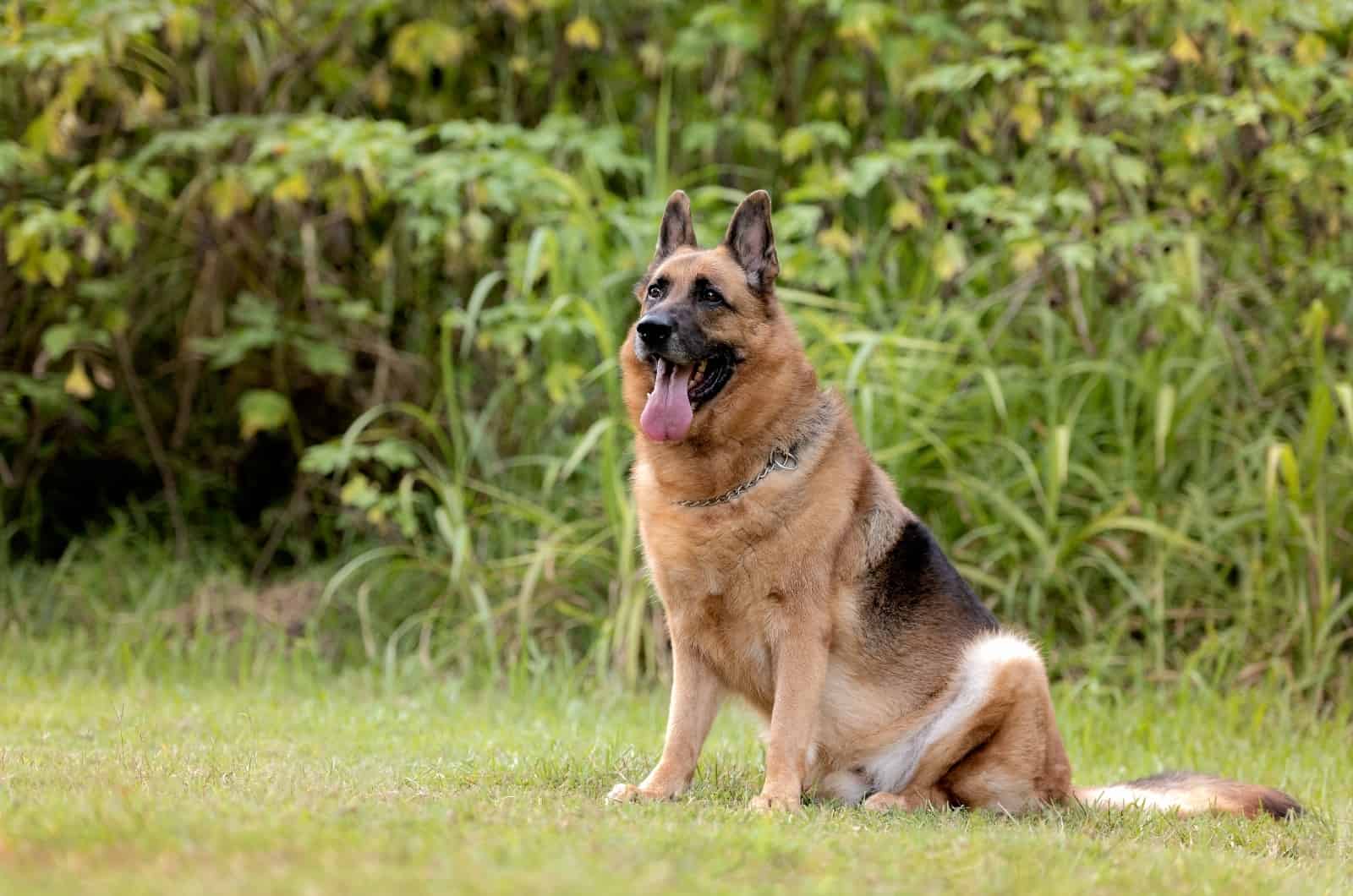
This is one of the most characteristic behaviors known for dogs: being playful. Whenever your German Shepherd dog is in a playful mood, its tail will be wagging for sure.
When in a playful mood, besides the fast tail wags, your German Shepherd will occasionally bark as if it is trying to call and challenge you to play with him.
From my personal experience, I had a great time with Lilly, whose tail wags always mean a good thing. She is always happy to be included in some playtime, and she can’t wait for someone to throw the ball, so she can go for it.
It is important to know the difference between the playful mood and the protective mood because both of them happen while the GSD is barking and wagging its tail.
However, there is a key difference between these two tail wags. When your German Shepherd is playful, he will often have lower-positioned ears. However, when he is protecting you and his territory, his ears will be alert.
5. They Are Feeling Happy
Whenever your German Shepherd dog is feeling head-over-heels happy, his tail will match his overall mood.
The faster they wag their tail when they see you, the happier and more excited they are. One of the key indicators that you might notice can be answered by the two questions below.
- Does your German Shepherd’s tail wave back and forth, and appear relaxed?
- Does your German Shepherd’s body follow its tail as it wags?
If so, you are likely dealing with a happy German Shepherd if its tail is wagging, and the body appears relaxed or moves in unison with the tail. A comfortable, pleasant tail wag usually goes hand in hand with a kind of relaxed smile.
Sparkling eyes, a calm, open mouth, and sometimes a light pant are typical characteristics of a happy dog. The dog frequently shows excitement by wagging its tail quickly, and making other enthusiastic gestures, such as wanting to be close to you, licking you, etc.
6. They Are Anticipating Something
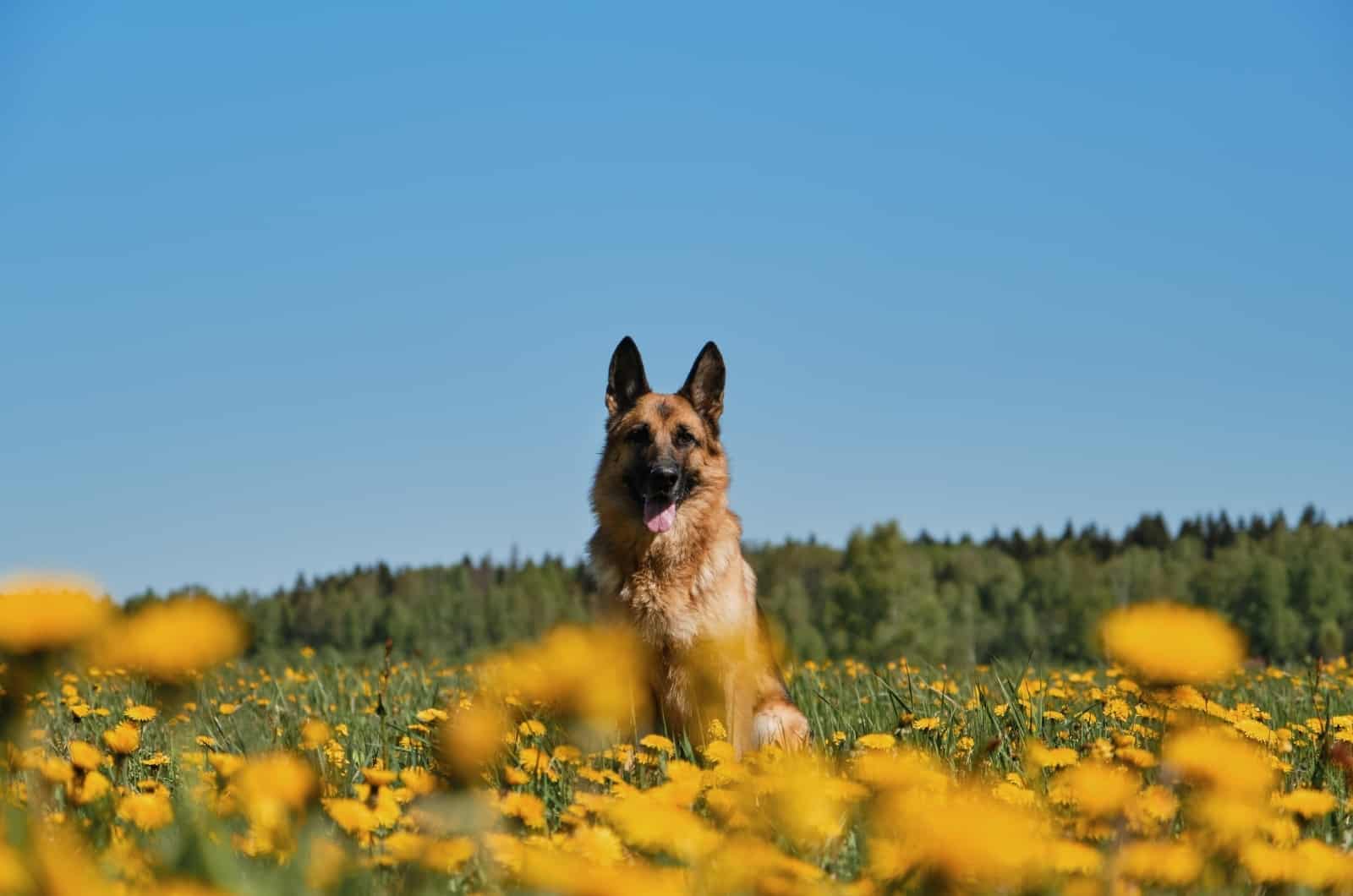
You probably have a specific behavior when you are happily awaiting something that is about to happen at any second.
German Shepherds tend to wag their tail, tilt their head, and sometimes even cry whenever you do a specific action or say a word that they connect with their favorite activities.
You have probably noticed that behavior whenever you say things such as: ‘let’s go to grandma’s house’, ‘walk’, ‘leash’, ‘treat’, or any other word that has an impact on their behavior.
That is when they are anticipating something that they connect with that certain word, and they will start wagging their tail no matter the tail type that they have because they know something good is about to happen.
7. They Are Enjoying The Company
Whenever you bring your German Shepherd dog to the dog park, you might notice that it will wag its tail the whole time it is there.
When they are spending time with others dogs or persons that they love, their tails will be wagging non-stop. That is something that they won’t be doing on purpose because for them, it is a natural way of showing happiness, just as smiling is for us.
8. They Are Showing You Love
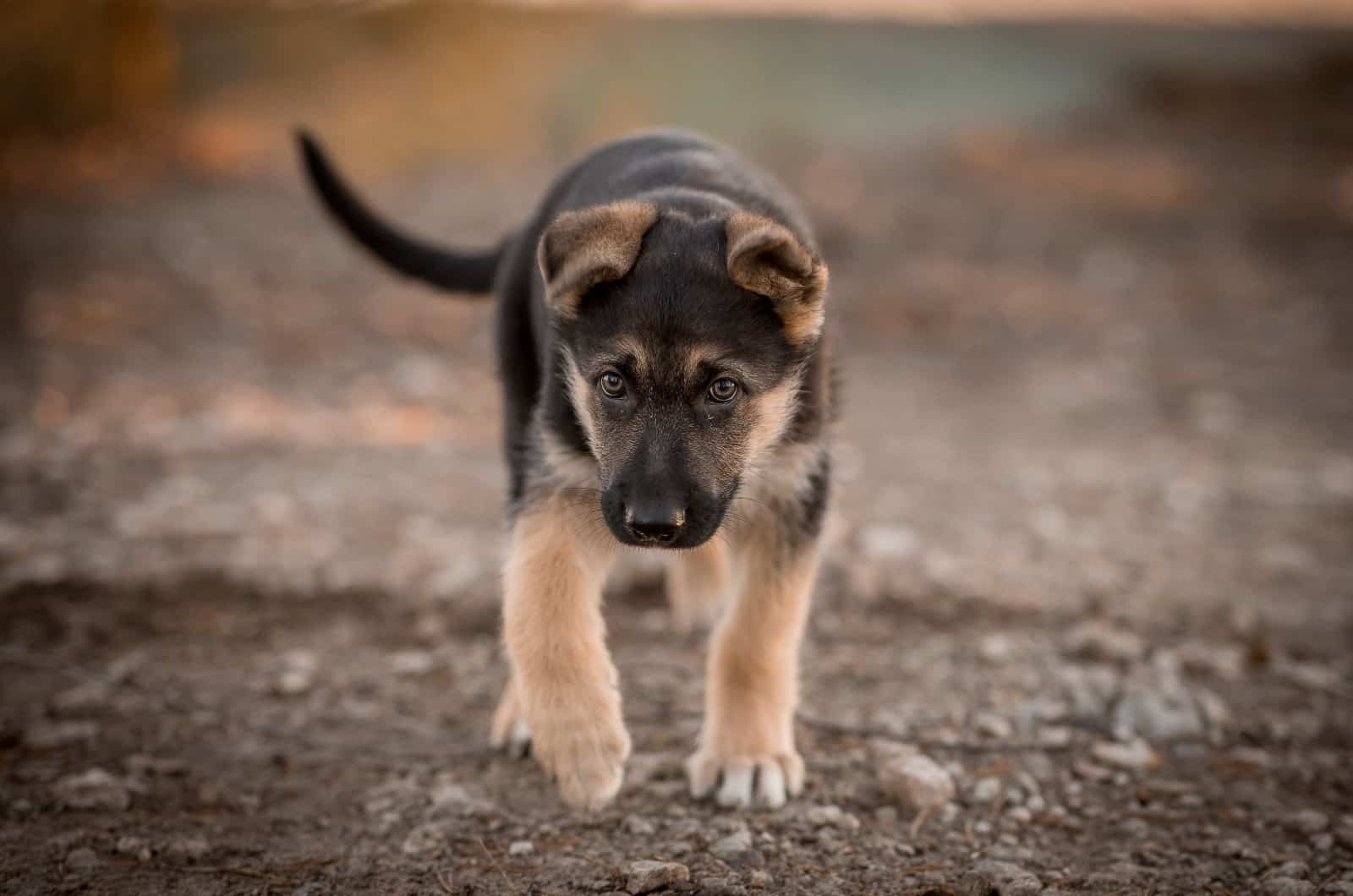
It is a widely-known fact that dogs wag their tail whenever they feel happy, excited, and especially when they are showing you love in any possible form.
One research [1] claims that when your dog encounters a person or a dog that they love, their tail will wag to the right; however, when they face a dominant canine, their tail will wag to the left.
The intensity of the tail wag also indicates how at ease they are around that particular human. When I was training a German Shepherd for the police forces, whenever he was off-duty, he loved showering me with numerous tail wags and kisses.
The tail would wag vigorously when he was with someone he loved and felt comfortable around, yet it would wag far more slowly when he was with someone new.
As a result, if your German Shepherd is constantly wagging its tail when you are there, especially if it is wagging enthusiastically to the right side of its body, you can be relatively sure that your dog is showing his or her affection for you.
Final Word
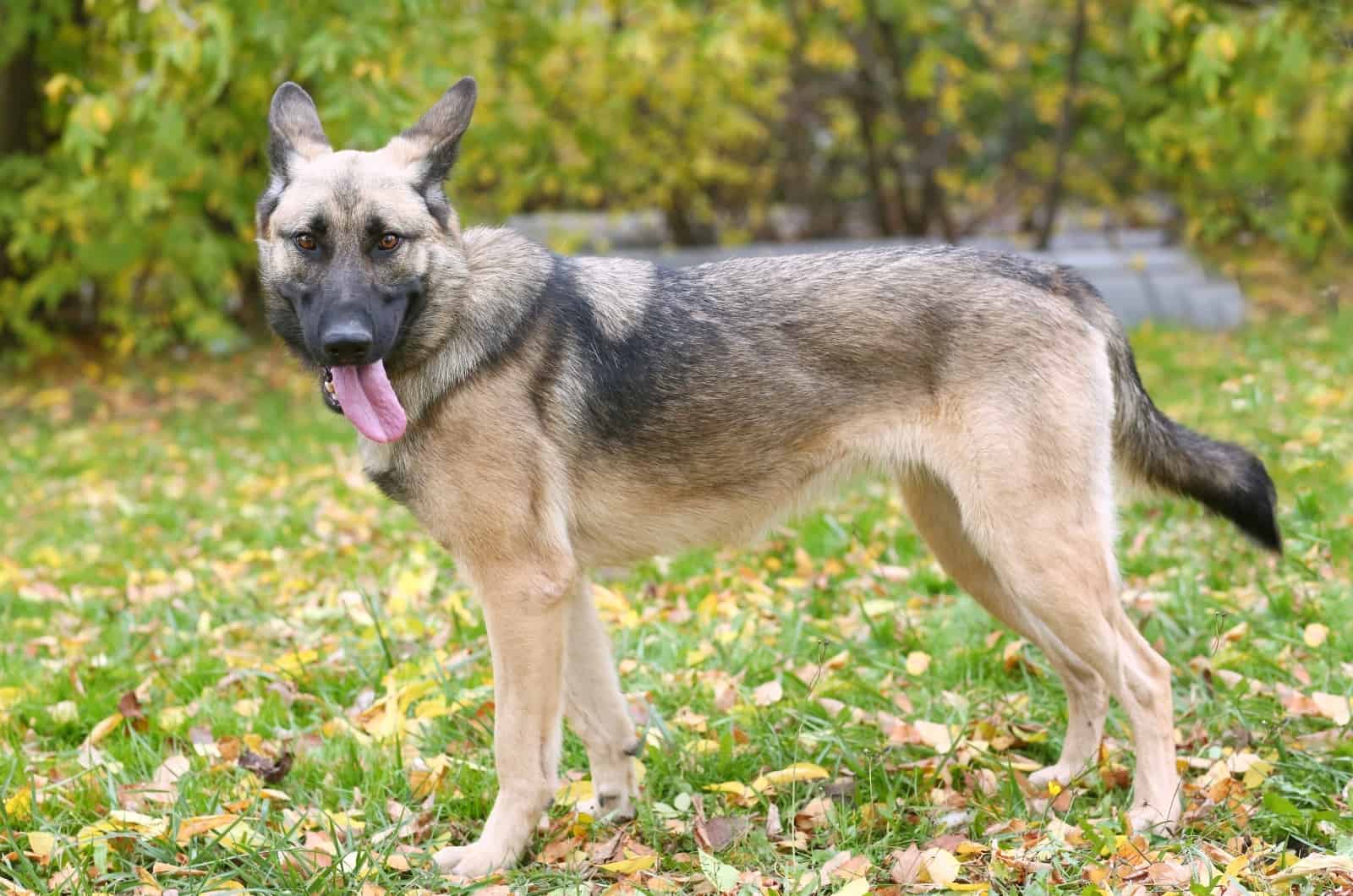
German Shepherds use their tail wags to interact with both people and other dogs. The message the GSD is trying to communicate to you whenever it wags its tail is frequently pretty evident. Most people assume that a dog is happy when they see its tail wagging.
Although this is typically the case, occasionally a dog will wag its tail before becoming hostile. You must pay close attention to the dog’s tail when it is wagging in order to determine the posture of the tail, and the message that it is trying to convey.
You can see what your GSD is attempting to say from the position of its tail, and the way it holds its body when wagging. The German Shepherd’s body language may also contain other cues that you should watch out for.
